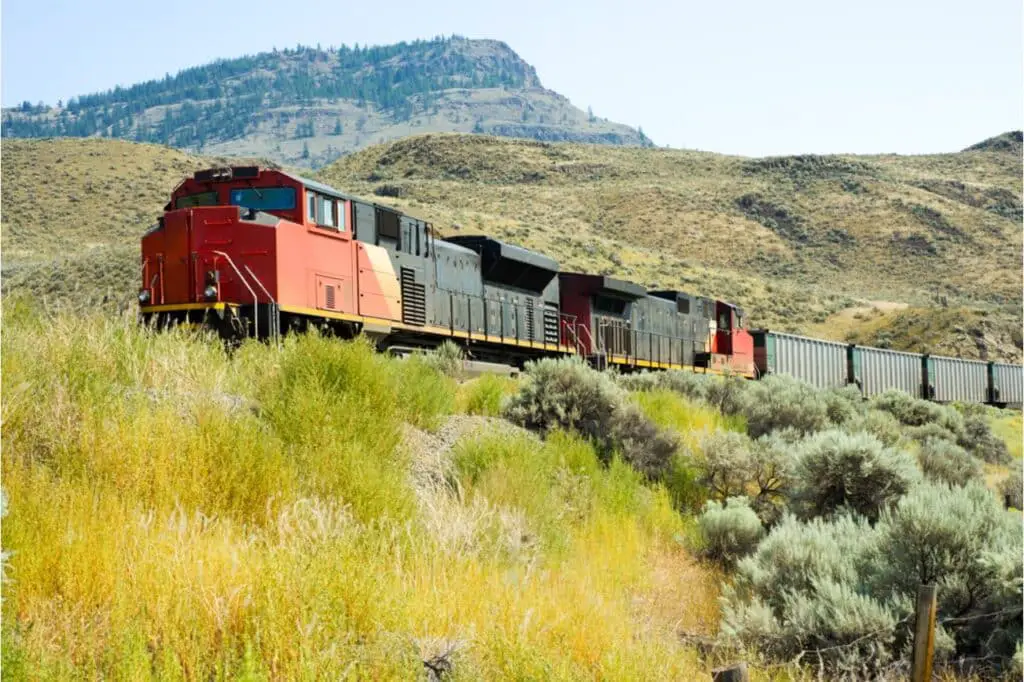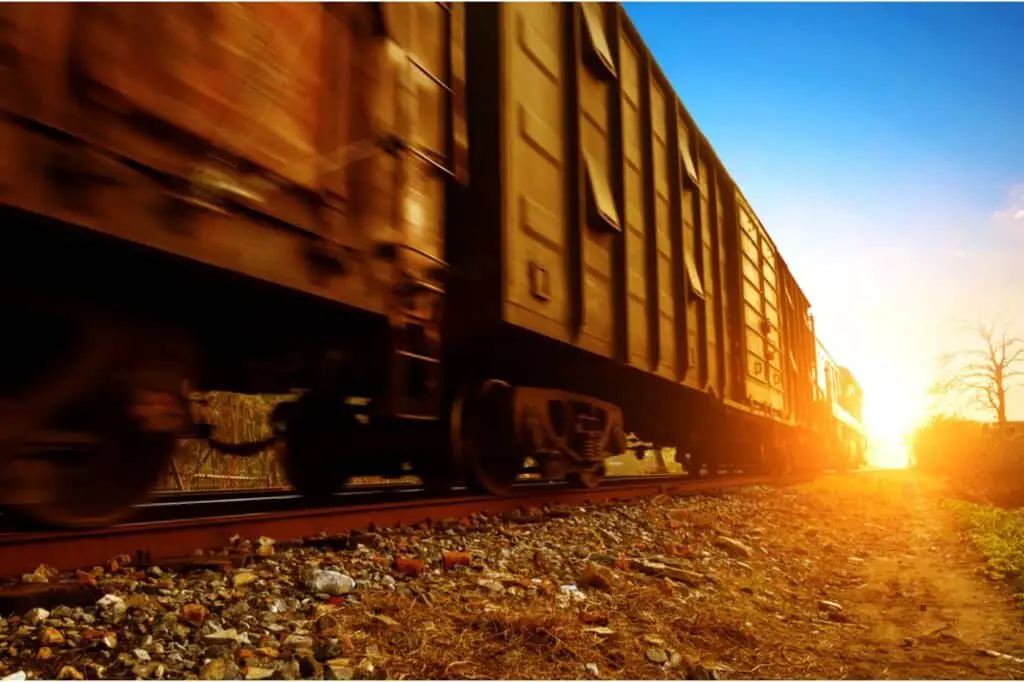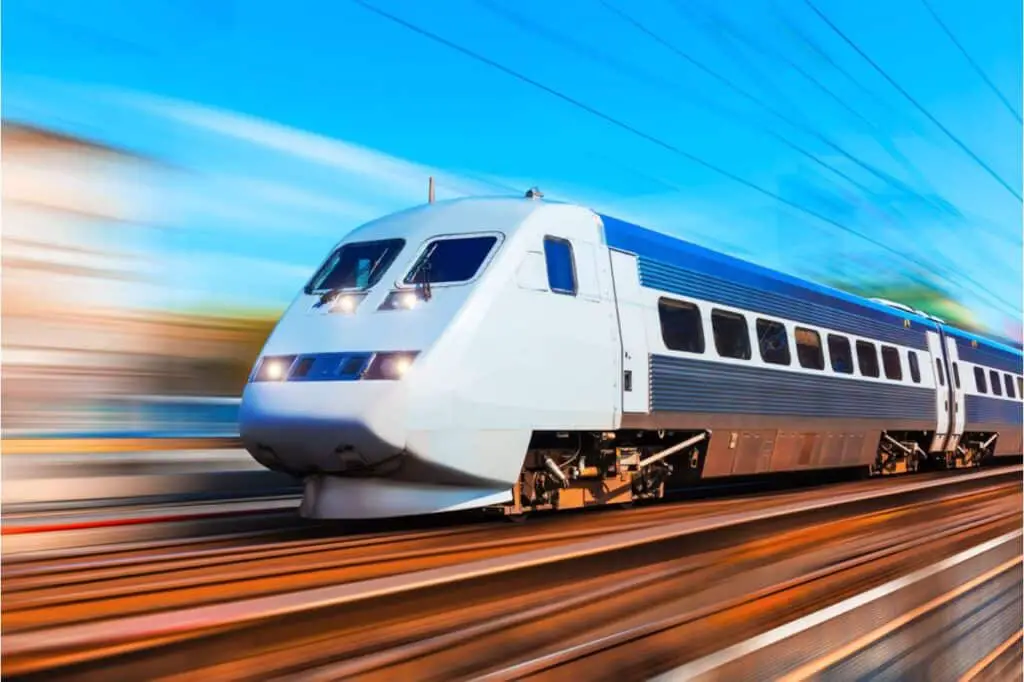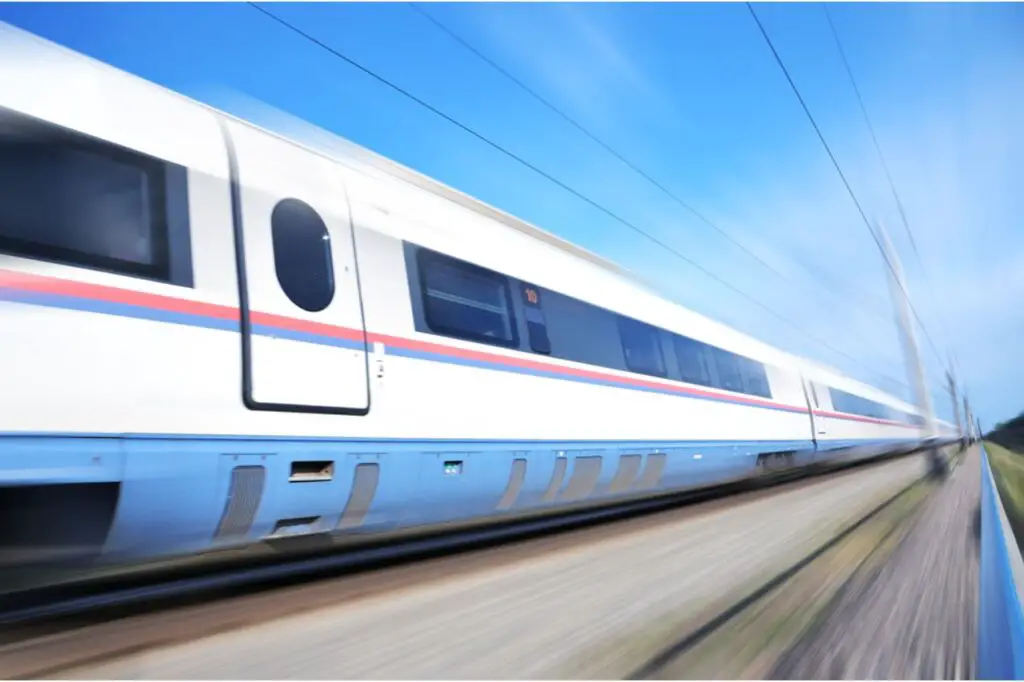What do modern trains run on? Today’s trains run on diesel-electric, gas-turbine, and electric power. But, let’s dive into the details a little further.

We all know that classic representation of trains. It’s those with gigantic engines with massive smoke billowing from the head! Much like Thomas The Train or Chuggington, if you can imagine.
These trains used steam power.
Initially, locomotives had steam to power them and these steam trains aren’t completely obsolete.
There are a few steam locomotives left running in the world. But, they are no longer extensively used.
So, what do modern trains run on?
Trains and their fuel progressed through time. Today, there are three main train fuel sources. These are:
- Diesel-Electric
- Gas-Turbine
- Electric
Let’s take a deep dive into all three of them.

Diesel-Electric Power
Following steam-powered locomotives were Diesel-Electric Power.
Diesel-Electric-powered trains commenced in the 1930s. The Electro-Motive Division produced the first successful passenger-carrying diesel-electric powered train. This was their E-series.
This set of locomotives was constructed with six axles. And after its debut, it replaced countless steam locomotives on major railways.
From here, the Electro-Motive Division experienced continued success. Slightly after their E-series launch, they introduced the F-units.
These were four-axle locomotives intended mostly for freight. But, these locomotives became widespread in a variety of passenger trains. One example of this was the “Super Chief” of Santa Fe Railway.
How Does Diesel-Electric Powered Train Work?
Diesel-electric locomotives are self-propelled rail vehicles. These travel across the tracks while pulling or pushing a train linked to it. They doe this by using a massive diesel-fueled inner combustion unit. This is its principal power source or driving force.
In contrast to typical cars, though, contemporary diesel locomotives lack continuous mechanical interlocking on their wheels and engines.
Thus, the engine’s power isn’t the one that turns its wheels. The diesel engine’s function isn’t to catapult the locomotive. Rather, it becomes a massive generator and rotor of electricity. It is what generates its current of electricity.
Subsequently, if necessary, the AC is converted to DC using a rectifier.
The power is then transferred onto traction motors. These ultimately provide the real (rotary) force that rotates the locomotive’s wheels.
Therefore, the diesel engine’s sole purpose is to provide electricity for the train’s traction motors and supplemental machinery. Which includes the blowers, compressors, and so on.
The Advantages Of A Diesel-Electric Powered Engine
Diesel locomotives continue to be one of the most prevalent kinds of trains today. They are extensively used for passenger and freight transport.
Why? They are ultimately economically and productively. These locomotives require need fewer resources and use less fuel.
To start, they have more operating electrical components. Therefore, one crew may run many locomotives from a single engine.
Moreover, diesel locomotives are far more lightweight than steam trains. This means they are less damaging to the overall infrastructure. In turn, this also implies that there are fewer costs for upkeep.
Generally, diesel engines are more expensive to produce compared to steam locomotives. However, it is a better and more feasible financial option when you look at the bigger picture.
Steam trains are higher in maintenance costs. And its parts are less accessible now since they are virtually obsolete.
Finally, these locomotives have good fuel efficiency. CSX Transportation claims that one gallon of diesel could run a train 134 miles. Not only does this lessen overhead costs, but it’s also more environmentally friendly.
In fact, CSX invested billions in improving their train’s fuel consumption.

Gas-Turbine Power
The development of gas-turbine overlapped with the development of diesel locomotives. They are both quite similar in operation. Gas turbines also power the locomotive’s traction motors.
Gas-turbine locomotives were first launched in the 1940s throughout France. They were actually used in a wide variety of applications across the globe. However, it only lasted for a brief time.
The American Locomotive Company and GE Transportation also produced some gas-turbine trains for Union Pacific. However, they were mainly used for their transcontinental rail systems.
But unfortunately, gas-turbine trains turned out to consume more fuel than diesel. During this time, there was an escalating expense for Bunker C fuel. Thus, the locomotives were eventually withdrawn in the 1960s.
Ultimately, the gas-turbine power experienced very little “traction” during this time.
Down the road, however, they became popular. Passenger transport providers throughout the globe gradually adopted it.
Its first mega-successful launch was in the 1970s with TGV 001. Shortly after, North America heavily used gas-turbine. Some famous examples of these are Amtrak’s RTL, RTG, and Turboliners.
How Does A Gas Turbine Powered Train Work?
A gas turbine is powered and driven by its output shaft. This mechanism runs the alternator using a gear system. As mentioned, gas turbines are very comparable to diesel-electric. In fact, they use mostly the same components and parts too.
Turbines also possess many benefits over piston engines. There are minimal moving components, which can reduce lubrication maintenance. Gas turbines additionally have a higher power-to-weight proportion.
Moreover, a gas-turbine locomotive’s power output is lighter and much smaller. Therefore, it can operate strong without appearing bulky.
Perhaps the downside to this is its noise. Gas turbines are pretty noisy because of their lower rotational speed.
Another issue with gas turbines is their incapability for using existing energy along the rails. In turn, they use more power.

Electric Power
Did you know that electric locomotives have been operating since the 1910s?
It all started in the famous Hudson River Tunnels. Back then, people wanted the mainline from Philadelphia to New York extended.
However, steam locomotives were not permitted inside the tunnel. This is due to the tunnel’s vast size. Its fumes would put everyone in danger.
Because of this problem, they required a new engine design. And from here, the PRR initiated the DD-1 electric-powered locomotive.
They achieved much success with this, too! And from this point on, electric trains grew in popularity throughout the years.
Electric-powered engines were mostly used in high-speed trains. One famous example of this was Japan’s 1964 Shinkansen service.
The Shinkansen also paved the way for other high-speed trains in the world. Another example is the famed TGV in France.
Electric-powered engines and better recommended for high-speed trains. Mainly because they have superior efficiency. They feature an excellent power-to-weight balance. Plus, they are simpler to maintain.
How Does An Electric Powered Train Work?
Electric locomotives draw electricity from a source outside of themselves. Most of the time, this power arises from an overhead wire. Sometimes, it also comes from a third rail.
It may operate as a single entity or a part of an EMU. Nonetheless, they all operate based on external sources.
After enough “modification,” it sends the fuel to its traction motor. It rotates the wheels from this point.
This “modification” intends to maximize power delivery. It provides the motors with power for optimal operation under varying circumstances and weights.
The Future Of Locomotives
Undoubtedly, we have all witnessed the triumph of trains. Transporting commodities via train can be cost-effective, productive, and lucrative. And today, they are a vital component of America’s infrastructure.
What do you think it will look like years from now?
There are three major elements that influence this:
- The price and accessibility of oil
- The drive of governments to come up with new transportation
- Public demand for better transportation

Take Europe for example. The country possesses significant rail traffic. This was mainly influenced by history and the rising cost of fuel. And today, Europe has high-speed passenger trains.
There are a number of reasons why passenger rail has not taken off in America. Firstly, it does not have its own passenger rail network. Freight trains on the same tracks cause constant delays. Also, not all regions have accessibility to railways.
Secondly, cars and airplaines are still the most attractive transportation option for the majority of citizens.
And finally, trains in America need much improvement.
Let’s say you’re traveling to Washington from North Carolina. By train, this can take you at least five hours. It’s pretty much the same if you travel by car.
But now that oil prices are becoming higher, people will most likely want better travel options. This is where the potential of trains comes in.
Some technological innovations like maglev trains could make trains even faster.
Retooling U.S. railways towards a passenger service will not be simple, though. Passengers would certainly want high-speed railways similar to Japan, but…
High-speed trains are downright expensive. Not only that, their upkeep is costly too. Therefore, it highly depends on the government.
The question is, will they think the investment is worth it? This is truly an ingoing debate.
It seems that there are talks about it. Amtrak aims on expanding its system.
What Do Modern Trains Run On? Our Final Say
Most trains nowadays run on diesel-electric power. It’s the most productive, cost-effective, and fuel efficient system. There are also gas turbines, that are popular among some passenger trains. And finally, there are electric-powered trains.
These trains are very much used for high-speed locomotives. You can find these mostly in Japan, Italy, and Switzerland.
Indeed, the world has come a long way since steam trains. It’s great to see innovation taking place. And as rail enthusiasts ourselves, we love seeing how many people are interested in its history.
Perhaps the underlying question is, what does the future hold for locomotives? It’s definitely not going anywhere. But, what’s the next step? Will the United States make more investments in passenger rail?
Let’s hope so!

